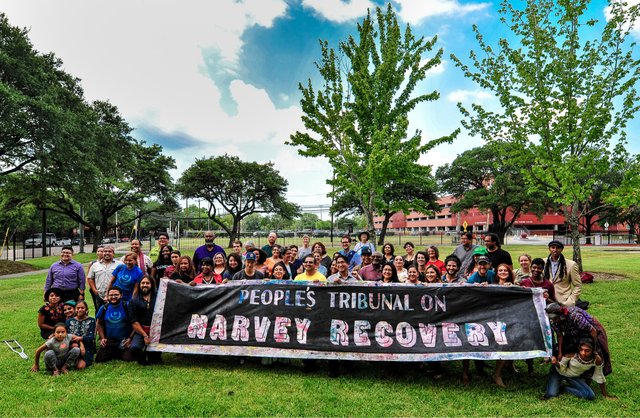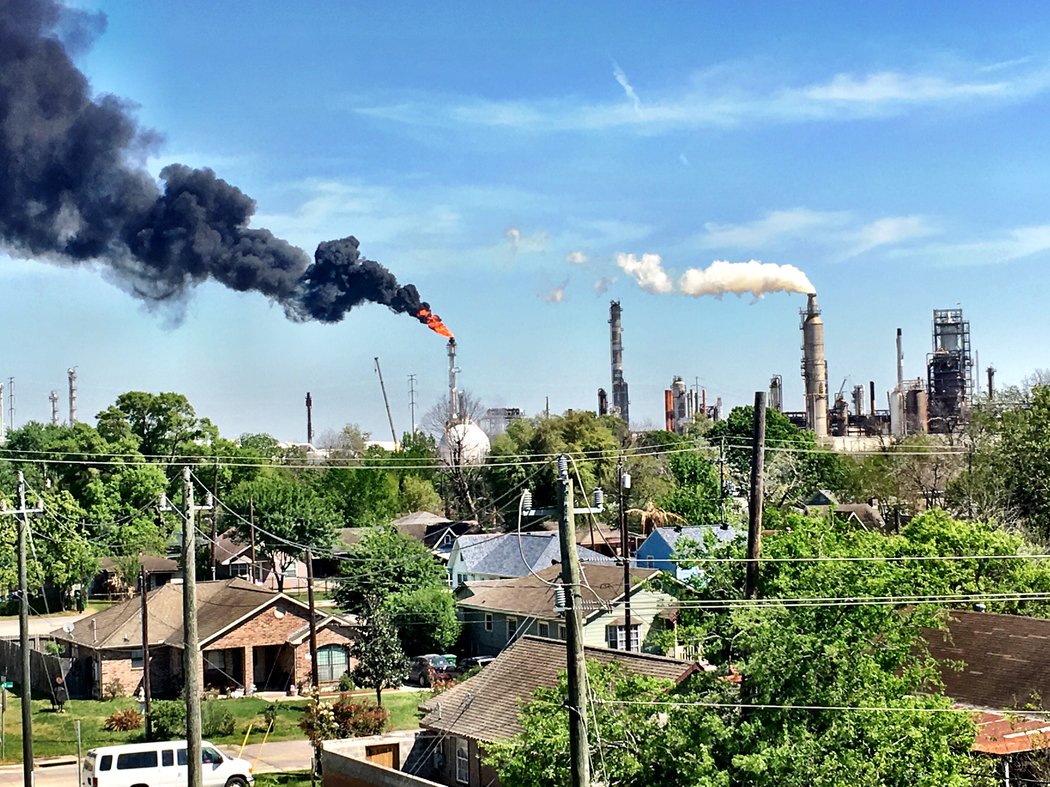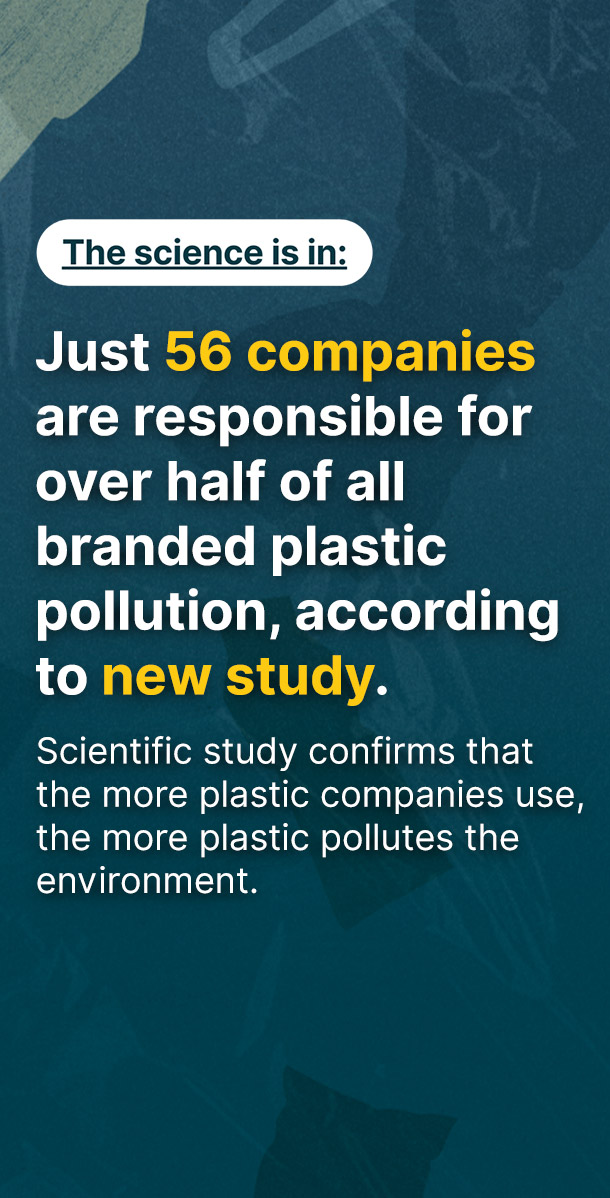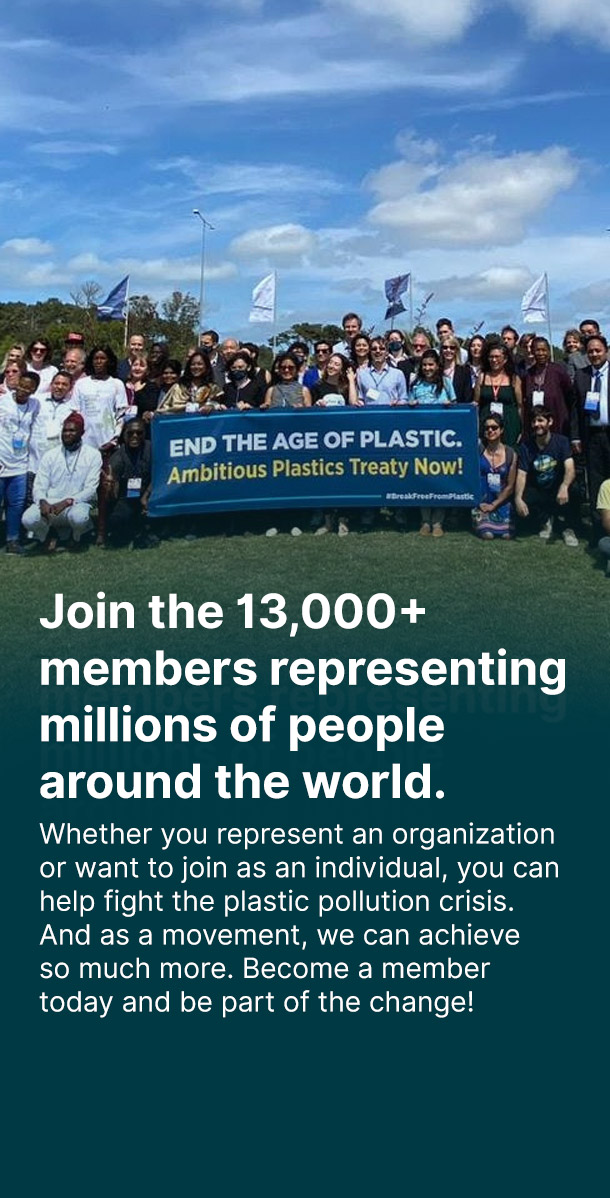A few times during our phone call, chirping from a gaggle of winged visitors threatens to drown out Errol Summerlin’s voice. He’s on his porch in Portland, Texas, describing a David-and-Goliath battle to stop the largest plastics plant in the world from being built on the same jut of land where Hurricane Harvey made landfall in 2017.
“I’m a big birder,” he tells me, noting how a mulberry tree in his yard encouraged some of the 400 species migrating along the Gulf Coast to stop for a snack. “From Baltimore Orioles to Summer Tanagers—you name it, they come by.”
Birding is both a welcome distraction and a driving force for Summerlin’s grassroots organizing, which has taken up much of his time since he learned in 2016 that a mysteriously named Project Yosemite was seeking a billion dollars in tax breaks, along with air and water permits, from the local school district, San Patricio County, and state officials.
“As we delved into who this was, and where they were building, outrage began to grow,” Summerlin recalls.
The project turned out to be a $10 billion collaboration between Dallas-based oil giant ExxonMobil and Saudi Arabian-owned SABIC, one of the world’s largest petrochemical manufacturers. They had requested tax abatements from the local school district on 1,400 acres of former farmland, next to what is now a wind farm, across from a low-income housing complex, and about a mile from Gregory-Portland High School.
There, the companies plan to erect an ethane “cracker,” an industrial facility used to break down liquified natural gas, derived from fracking, into ethylene and then refine the ethylene into polyethylene pellets. Pellets would be exported via a new 1,000-car rail yard or proposed shipping terminal, to be molded into plastic products like bottles and caps, food packaging, and trash bags.
New projects are part of a massive build-out of plastics infrastructure fueled by the shale-oil fracking boom.
Summerlin, a retired legal aid lawyer who leads the local group Portland Citizens United, began to realize the project was part of a massive build-out of plastics infrastructure fueled by the shale-oil fracking boom. It threatens to turn the Texas Gulf Coast region known as Hurricane Alley into one big fenceline community, with eight new crackers and fourteen new polyethylene plants planned by 2022. This includes two crackers that went online in 2017 between Ingleside and Freeport, not far from where he lives in Portland.
So Summerlin started strategizing with other Texans who are connecting their struggles—against oil drilling, fracking, petrochemical production, and ocean pollution—amid an urgent push to reduce emissions that hasten climate change. They see great potential in uniting various campaigns against oil and petrochemical operations by companies like Exxon-Mobil, with those holding Starbucks and Coca-Cola responsible for single-use plastic pollution.
“We all have a common nemesis, if you will,” says Summerlin.
In March of this year, Summerlin attended an invite-only “Break Free from Plastics” meeting in League City, on the outskirts of Houston, the sprawling megalopolis often called “the Petro Metro.” The nickname refers both to Houston’s car-centric culture and to the industrial areas around the Port of Houston where petrochemical refineries belch fumes into the air of neighborhoods populated mostly by low-income people of color.
Just a few miles east, Baytown is dotted with more petrochemical production plants—including a 3,400-acre ExxonMobil refinery and chemical complex that was ordered by a federal judge in 2017 to pay a nearly $20 million penalty for illegally emitting ten million pounds of what the Sierra Club summarizedas “carcinogens, other toxic air pollutants, and respiratory irritants like sulfur dioxide and ozone-forming chemicals.” The following year, the corporation completed a new cracker at the same site as part of its overall $20 billion Growing the Gulf initiative.
All of this made Houston an eye-opening location for the gathering, the first of its kind in North America. Participants got a “toxic tour” of fenceline communities from residents who are also organizers with t.e.j.a.s., Texas Environmental Justice Advocacy Services. They emphasized a strategic framework that all people have a right to equal protection of where they live and work, and a right to participate in decisions that impact them.
“Our guiding principle is that every-one, regardless of race or income, is entitled to live in a clean environment,” the group says on its website.
“We are fighting for the legacy of Texas, a word that comes to us from the Caddo Indian Nation and means friend or ally,” adds Bryan Parras, who co-founded t.e.j.a.s. and is now Gulf Coast organizer for the Sierra Club’s Beyond Dirty Fuels Initiative. “That’s what we’re doing now, making allies to protect the state from further devastation.”
Activists engaged in direct action to stop new pipeline projects also attended, along with a Greenpeace researcher who had spent months at sea collecting water samples and documenting heavy plastic contamination. (Scientists predict that, by 2050, the weight of plastic in the oceans will exceed that of fish.) Summerlin said these new details “broadened our focus” when he shared them with Portland Citizens United.
“Previously, we talked about environmental and local impacts and really didn’t focus on the fact that Exxon was making plastics and pellets to be exported,” he recalls. “We didn’t look at its global impact.” On his return, he posted on the group’s Facebook page that the Portland-Gregory area, now known as a place to watch endangered whooping cranes, might soon be considered “the plastics capital of the world.”
“It gave us other angles to respond to those who say, ‘You guys don’t care about jobs. You drive your cars and you fill up your gas tank and you’re releasing emissions’—that kind of argument,” Summerlin recalls. “We started responding: Yes we do, but this plant won’t produce gas for our cars or heat for our homes. This is plastic pellets they’ll sell to manufacturers in China who sell plastic products to developing countries that end up in the ocean. Where is the gas production in that?”
Other powerful hurricanes like Rita, Ike, and Katrina have hit the Gulf Coast, but Harvey was the first to strike since the petrochemical industry launched its expansion, and it had a major impact when it stalled over Houston’s petrochemical hubs. For example, the National Weather Service reported a North American record of 51.88 inches of rain fell on Cedar Bayou in Baytown, which forced Chevron Phillips Chemical to shut down its Cedar Bayou facility after it was swamped by flood water. The storm also delayed, but didn’t stop, Chevron from starting up a new ethane cracker at the same complex this past March as part of its U.S. Gulf Coast Petrochemicals Project.
In August, a People’s Tribunal on Hurricane Harvey Recovery examined how climate change and the storm’s impact have exacerbated pre-existing problems like Houston’s lack of zoning, which enables the concentration of polluting facilities in certain areas.
“Instead of NIMBY [Not In My Back Yard] we have what’s called PIBBY—Place In Black’s Back Yard, or Place In Brown’s Back Yard,” said Robert Bullard, a professor and former dean at Texas Southern University, the historically black school that hosted the event. “A lot of it has to do with race.”
Bullard, often referred to as “the father of environmental justice,” has authored books like Unequal Protection: Environmental Justice and Communities of Color and The Wrong Complexion for Protection: How the Government Response to Disaster Endangers African American Communities. He spoke at the panel along with two Latinx organizers, including Yudith Nieto, who described the plight of immigrant communities who struggle with daily pollution from a Valero refinery that got worse when Harvey hit.
“Every hurricane season my family gets really nervous,” said Nieto, who grew up in an east Houston area known as Manchester. She recalled how her parents were “trapped in Manchester under this toxic plume” during the storm and felt sick afterward. “We are surrounded by industry so a lot of the time the industries lose power and they malfunction during rains and during the hurricanes, so there is a lot of emissions after and during the events.”

Activists gathered to discuss a justice-based recovery from Hurricane Harvey at Houston’s Texas Southern University in August 2018.
When a chemical facility is forced to shut down quickly, it flares or burns excess gases it can’t process. Complaints from residents about massive gas flares and chemical smells were common topics on social media during Harvey. Dramatic news reports also thrust the industry’s mishaps into the spotlight. Residents of La Porte along the ship channel were told to shelter-in-place after a pipeline leak, and several facilities saw crude oil, benzene, toluene, and volatile organic compounds released when floating roofs on storage tanks sank during the heavy rains.
But it was Arkema’s plant in Crosby, Texas, that drew the most concern. There, trailers storing organic peroxides used to make plastics caught fireamid “explosions and black smoke” after the complex lost power and backup units could no longer refrigerate them as the site flooded with six feet of water. Local officials warned residents in a 1.5-mile radius to evacuate, and seven first responders later sued Arkema for causing them “severe bodily injuries” by failing to properly prepare despite several days’ notice.
In March, a Harris County grand jury indicted Arkema, along with its Chief Executive Officer Richard Rowe and Plant Manager Leslie Comardelle, in what could be a bellwether case. They face up to five years in prison if convicted on felony charges of recklessly emitting pollutants into the air during the storm, and the company could be ordered to pay up to a $1 million penalty.
Federal and state air monitors in the area claim they did not detect levels of emissions harmful to human health during and after Harvey. But a Houston Chronicle analysis of self-reporting from industrial plants to state environmental officials documented nearly 4,000 tons of unpermitted air pollution from seventy-five industrial sources. The releases exceeded state limits but were allowed under a waiver enacted by Texas Governor Greg Abbott, a Republican, that remained in place until this past April, after months of protest.
Texans opposed to the expansion of the fossil fuel industry face an extremely well-funded opponent with friends in the media, as well as government officials eager to tout job creation and take donations.
Despite its reporting on how companies leaked chemicals during the storm, the Houston Chronicle ran a post-Harvey piece proclaiming that Houston “needs petrochemicals more than ever.” It argued those same facilities “make the building blocks for our homes, and without them, recovering from a hurricane would be impossible.” The article called the newest facilities “extremely efficient and environmentally responsible.”
The Greater Houston Partnership, essentially the local chamber of commerce, has predicted the growth in plastics exports from the Gulf Coast will create 10,000 local jobs by early next decade. The University of Houston’s Energy Advisory Board consists entirely of “thought leaders” from the oil and gas industry. Its chief energy officer, Ramanan Krishnamoorti, argued before Harvey’s floods had even drained that the storm “should not become the clarion call for a move of the chemicals industry out of Houston or the larger Gulf Coast.” Instead, he touted the “significant improvements that have come about in the petrochemical industry and its impact on human prosperity.”
The Exxon-Saudi coalition has also spread its wealth around while trying to build in Portland. It promised 600 permanent jobs in addition to those created by their new plant’s construction, supported by a $100,000 donation to local career and technical education programs; it even donated $90,000 to area environmental groups as part of its Good Neighbor Program that claims to support environmental stewardship. A press release listed recipients like the National Audubon Society “for their work to preserve local Whooping Crane habitats,” as well as the University of Texas Marine Science Institute in order to help in Hurricane Harvey recovery.
“During this very active year for our Wildlife Rescue and Recovery program, this gift comes at a particularly important time for us,” said Tom Schmid, president and chief executive officer of the Texas State Aquarium, a $40,000 beneficiary.
To avoid the worst impacts of climate change, scientists say the planet’s remaining fossil fuels must be kept in the ground. But the boom in plastics production relies on hydraulic fracturing, or fracking, of oil or natural gas from deep in the earth. The Obama Administration encouraged fracking in the state’s vast Permian Basin and many other shale fields as a way to achieve U.S. energy independence. These days, the Trump Administration has maintained close ties with Saudi Arabia, tried to deregulate the industry, and approved new pipeline infrastructure to enable more exports.
According to Priscilla Villa, the South Texas organizer for Earthworks, “Plastics shows how issues go beyond silos and intersect.”
She says lower-carbon fracked gas was first touted as a “bridge fuel” to help shift reliance from coal-fired power plants to renewable energy sources like wind and solar. But research has shown that fracking wells leak massive quantities of methane gas, which is eighty-six times more potent than carbon dioxide at trapping heat over a twenty-year span. A Texas Commission on Environmental Quality agent responding to complaints became ill after using an infrared camera to document emissions otherwise invisible to the human eye.
Below ground, fracking uses a mixture of water and chemicals to drill, and residents worry it could both contaminate and exhaust their already limited drinking supply. Permian Basin operators used nearly 58 billion gallons of water to frack and drill in 2017—eight times the 6.8 billion consumed in 2011. State records showed in August that more than eighty public water systems in the West Texas Permian Basin asked—or required—customers to limit water use because of drought.
Back on the coast, Portland Citizens United and the Sierra Club are disputingwater and air permits the state issued for ExxonMobil and SABIC’s new steam-powered cracker, which will use an estimated 7.3 billion gallons of water each year. The Texas Commission on Environmental Quality approved a wastewater permit to discharge millions of gallons of polluted water into the area’s bays and watersheds. In October, it also authorized a draft permit to build a seawater desalination plant local officials say would address potential water shortages.
But concerned residents note that out of the 150 million gallons the plant would take in per day, just 50 million gallons of freshwater would be produced and the rest discharged. They also fear a hurricane could damage or even destroy the plant. Meanwhile, a new battle has erupted over plans to build a deepwater export terminal near the site of what is now the dock for a tourist ferry to visit the Aransas National Wildlife Refuge or Padre Island National Seashore.
On a recent trip dubbed the#TexasFenceline tour, Summerlin joined activists who visited a Formosa Plastics cracker and refining complex in Point Comfort, less than an hour’s drive from Portland. He says the massive jumble of tanks and pipelines and flares as they approached were “ominous looking,” but what shocked him most were the discarded plastic pellets he saw everywhere along the beaches and even the streets. The group picked up bagfuls of these poisonous pellets to keep them from being eaten by fish and threatened bird species like the Red Knot or Piping Plover. “It was a real eye opener to see it in person,” he says.
In October, at one of its largest meetings to date, Portland Citizens United formed a new alliance with other groups to try to stop the petrochemical industry’s buildout. Summerlin says eight groups are already on board, and he anticipates more will join soon, because “folks have finally realized these guys are not going to stop.”
Article originally appeared in The Progressive.




